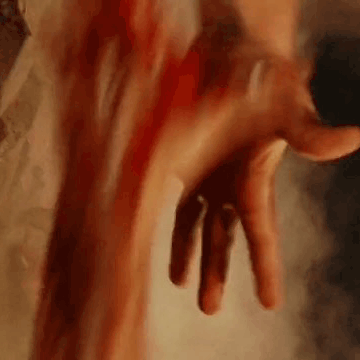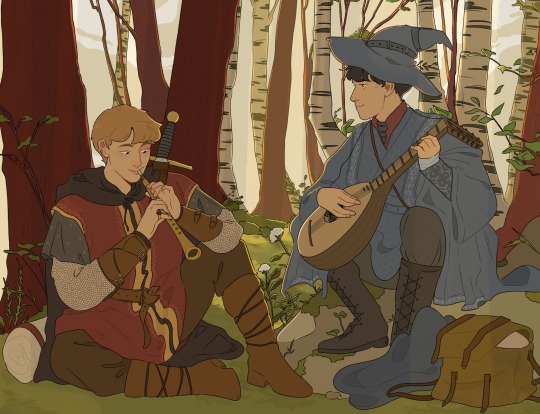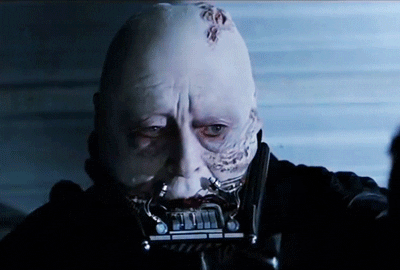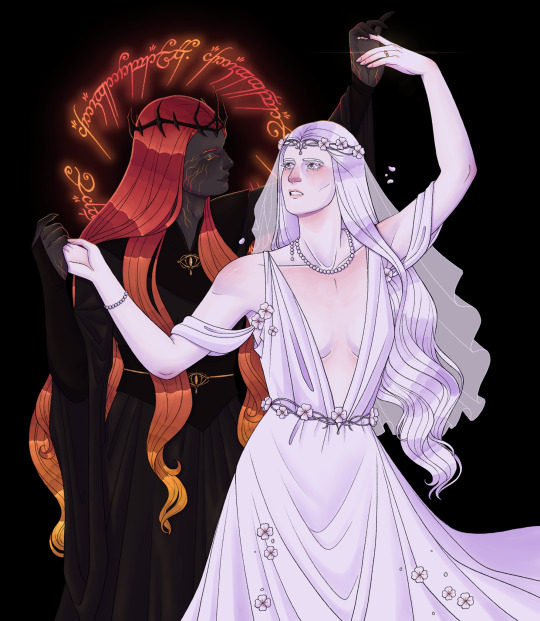#lotr parallel
Text




parallels
#lotr#lord of the rings#the lord of the rings#samwise gamgee#frodo baggins#sam and frodo#frodo and sam#samfro#frosam#lotr parallels#lotr parallel#lotr edit#lotr gifs#lotr gif#tolkien#jrrt#rotk#fotr#sam gamgee#tolkien gifs#Middle-Earth
1K notes
·
View notes
Text
rewatching lotr, as you do, but there's something hitting about Isildur getting killed by three arrows (to the back) while abandoning his men versus Boromir getting killed by three arrows (to the chest) while doing everything to save Merry and Pippin and the influence of the ring over men, idk but my heart did a thing when i noticed it :(
#lotr#boromir#haven't even gotten to the boromir scene yet and i'm sad about it#the scenes between him and merry & pip kill me#crying over lotr hours#This is about the movies JUST the movies a cinematic parallel what is presented on the screen in Jackson interpretation ok? We got that
5K notes
·
View notes
Text

i like to think they would be happy in middle-earth
#merthur#bbc merlin#arthur pendragon#merlin fanart#lord of the rings au of sorts?#i’ve been consumed by lotr lately and i thought drawing merthur in a slightly different fantasy world would be fun#also the parallels between merthur and samfrodo? crazy
4K notes
·
View notes
Text
isnt it insane that merry and pippin spent like the span of weeks apart in different countries and immediately made new besties whose lives they save in their final battles. like merry strikes the blow on the witch king that lets eowyn kill him and pippin pulls faramir out of denethor's pyre. and then eowyn and faramir ended up marrying each other. isn't that wild. were merry and pippin conspiring in the houses of healing like hey i think my new best friend would be great with your new best friend how quickly do you think we can get them to fall in love. was there great hobbit cacophony when faramir kisses eowyn on the ramparts. i think yes.
#merry brandybuck#pippin took#eowyn#faramir#lotr#tolkien#i just think Themes and Parallels and Narratives are neat#brainworms brainworms brainworms#.txt
20K notes
·
View notes
Text
Okay but I do get really tired when people rag on Narnia's Biblical parallels for being too overt. Like, yeah dude. It's written for kids. Most kids don't do subtlety. I knew my Bible better than probably 95% of third graders, and yet my parents still had to clue me in. I've talked to people who grew up secular and didn't realize Narnia was Christian until well into adulthood. The Christian parallels in Narnia are at a pretty perfect level for most kids, and the fact that we as adults continue to get new spiritual meaning from it as we grow is a real testament to the depth of Jack's writing.
#mostly i just get sick of narnia being compared unfavourably to lotr#they are written for two different audiences with different purposes and different ingredients and they are both good!#like yeah okay tolkien disliked allegory. (a) narnia isn't exactly allegory and (b) even if it were would that be so bad?#Jack's over here doing his own thing. i for one love how overt Narnia's Biblical parallels are#okay rant over#why did i ever think it was a good idea to talk narnia on the internet. i am way too defensive and possessive of it#pontifications and creations#narnia
843 notes
·
View notes
Text

hey guys. hey guys remember that au I made
#the first thing i thought of when i heard that line was the where you go i go line#so#voila#there are so many parallels between sam and frodo and martin and jon i love it#tma lotr au#mossiistars#the magnus archives#tma#jonmartin#tma fanart#jonmartin fanart#jmart#lotr
1K notes
·
View notes
Text
if i had a nickle for every time a pair in the middle earth legendarium defied a dark lord, saved each other by song, lost a limb, and got rescued by the eagles, i would have three nickles which isn't a lot but it's funny that two of the most queer-coded relationships get paralleled to tolkien's 'ultimate ideal of a romance' couple like this twice it happened thrice
#tolkien#lotr#the silmarillion#silm#listen. i know this is not a new realisation by any means but I'm reading beren and luthien#and the parallels sure are paralleling#russingon#samfro#beren and luthien#mona rambles#*mine
233 notes
·
View notes
Text


they were insane for this
#bilbo and tauriel parallels still fuck me up TO THIS DAY#bagginshield#kiliel#tauriel#bilbo baggins#the hobbit#lotr#thilbo
5K notes
·
View notes
Text
Fingon 🤝 Lúthien 🤝 Samwise Gamgee
Saving your loved one from evil with the power of song and sheer determination
Maedhros 🤝 Beren 🤝 Frodo Baggins
Losing an appendage
#my favorite Tolkien parallel#silm#silmarillion#lotr#lord of the rings#fingon#maedhros#russingon#luthien#beren#beren and luthien#samwise gamgee#frodo baggins#samfro
932 notes
·
View notes
Text
while i do have a soft spot for “hobbits age slower than humans so 33 for them is our physical 18” i rlly dont think that’s how it is bc they get to about the same age as humans before death by old age, i also really dont think we appreciate enough a few things about what this means narratively and thematically
tolkien really said no child soldiers, no 20-something year old soldiers, they’re not really adults yet, they barely know anything of the world we’re sending them to die for it and that’s not okay, not when there are other options
he also addresses this with the hobbits specifically, frodo and bilbo are 50 when they go on their journeys, FIFTY, and we can see that they handle them differently than the others. while bilbo changes afterwards, it’s not in a coming of age like we would see if 50 really was the equivalent of ~27, he just accepts a part of himself he’s been suppressing for years, for him it’s accepting that getting older and being an adult doesn’t restrict you from the excitement and opportunities of youth. similarly frodo doesn’t change much either outside of his ptsd, all of his change is trauma, not maturity
now sam and merry are both past the age of majority, but they still grow into themselves in a way bilbo and frodo do not, they mature
but pippin, sweet beautiful pippin grows the most out of all of them. he’s the most childish, always running after his cousins and you can tell he’s not even 30, this is HIS coming of age story, before this journey he’s known nothing of true responsibilities, but by the end he’s ready for when he eventually has to take over as thain of the shire
and i think that this is a really beautiful way of saying something that has started to get really popular in the last few years
instead of being terrified of that big 30, we should be excited for it, we should embrace it wholeheartedly, because it’s the time when we’ve finally started ironing out the last of the kinks in being an adult, we’re growing into our responsibilities and and we can start learning how to cultivate that balance of responsibility and excitement and FUN that makes life living instead of surviving
#tolkien#lord of the rings#lotr#hobbits#the hobbit#god i love these books so much#tolkien was so far ahead of his time#like obviously he had some issues#the race issues have had some really good talking points lately thanks to rop and people being more receptive to these discussions#but like everything else aged pretty well#his themes on gender are rarely paralleled even today by shit that passes the bechdel test#which is insane#*noodlespeaks
2K notes
·
View notes
Text




Star Wars : Return of the Jedi (1983)
The Lord of the Rings: The Return of the King (2003)
207 notes
·
View notes
Text
The idea that GRRM is anti Tolkien is particularly funny because ASOIAF is sprinkled with rather intricate (and even passionate) homages to LOTR. And I can’t help but think of how Tolkien’s Fellowship, more specifically the Hobbits, may have inspired GRRM’s Night’s Watch. Jon Snow, for starters, is in many ways a combination of LOTR’s Frodo and Aragorn. And in the same way that Frodo, Sam, Merry, and Pippin are unexpected heroes in LOTR (because who looks to a hobbit as the face of an epic adventure?), Jon the bastard becomes the leader of a ragtag of socially disenfranchised men (in the form of the NW) who are anything but heroic. Sure there’s the odd knight or noble in there, but the NW is quite full of criminals and the very worst of the social order. The hobbits aren’t the strongest or the sharpest but they become the face of the fight against Sauron. And the NW, while being severely undermanned and under-equipped, has become the main force that stands against winter. GRRM even adds a love letter to Tolkien’s Sam Gamgee by adding his on Sam - Sam Tarly - who acts as a moral compass and counselor to Jon, in the same ways that Sam Gamgee is key to Frodo’s journey. And just like Frodo, Jon gets his very own pair of jokester friends, one of whine is even named Pyp. So it’s all very beautiful and nice, and we should talk about it more because it’s super evident that GRRM is a massive Tolkien fanboy. But I do have to say tho, GRRM’s take on Gandalf is exceedingly hilarious just because Melisandre is famously very bad at her job.
#asoiaf#lord of the rings#lotr#Gandalf - old and scary and very competent at his job#Mel - very old very scary and displays varying levels of competence#jokes aside another cool parallel between Jon and Frodo is that both#choose to embark on this dangerous journey because who else will do it?#Lots of arguing about who will destroy the ring who should have it etc and Frodo is just like#I’m ready to do what needs to be done even if it takes me to Mordor#Which is very similar to Jon who watches the rest of Westeros bicker about some stupid chair#And he’s willing to sacrifice his life and win no glory to save humanity in the face of an existential threat#And don’t think I need to get too much into Jon’s similarities with Aragorn because they’re plain as day#Also the iron throne and the ring of power having cool parallels?#Anyway asoiaf is so heavily inspired by LoTR and grrm is a such a huge fanboy#It’s insane that people think he hates Tolkien or whatever#jon snow#sam tarly#pyp#grenn#the night’s watch#frodo baggins#sam gamgee#merry brandybuck#pippin took#melisandre of asshai#gandalf#valyrianscrolls
334 notes
·
View notes
Text
The parallels between Beren & Lúthien and Frodo & Sam have been written about and spoken of plenty of times. But I’ve not yet found a full list, point by point, of each parallel. That I shall remedy.
These are listed in the chronological order of Beren & Lúthien’s story. The chronologies of the stories do not match up exactly, since the order of parallel events differs between each story. (For instance, 11 and 12 occur before 6–9 in the hobbits’ story, but after 6–9 in the Man and Elf’s story.)
Lúthien dances for joy in the woods, and Beren watches. / Sam dances for joy to warm in the sun naked on the Barrow-downs, and Frodo watches.
Beren is tasked to embark upon a perilous quest that involves keeping the Silmaril away from Morgoth and Sauron; the Silmaril is coveted by the sons of Fëanor. / Frodo is tasked to embark upon a perilous quest that involves keeping the Ring away from Sauron; the Ring is coveted by Gollum.
By completing the quest, Beren will win Lúthien’s hand and a chance for them to live in peace together. / By completing the quest, Frodo will ensure Sam’s safety and a peaceful land in which they can live.
Beren encounters an Elf, Finrod, who befriended his father, Barahir. / Frodo encounters an Elf, Elrond, who befriended his father figure, Bilbo.
Beren is imprisoned in Sauron’s dungeons. / Frodo is imprisoned in Sauron’s tower.
Lúthien uses her cloak to shield herself and scare off her enemies in Sauron’s fortress. / Sam uses the Ring’s power to shield himself and scare off his enemies in Sauron’s fortress.
Lúthien sings a song within Sauron’s fortress and locates Beren when he sings in response, believing her voice is no more than a dream. / Sam sings a song within Sauron’s fortress and locates Frodo when he sings in response, believing Sam’s voice is no more than a dream.
Upon finding Beren in the dungeon, Lúthien believes for a moment that he is dead and darkness falls upon her in her grief. / Upon finding Frodo stung by Shelob, Sam believes for a moment that he is dead and darkness falls upon him in his grief.
Beren and Lúthien are aided by Huan. / Frodo and Sam are aided by the Fellowship.
Beren and Lúthien are attacked by the sons of Fëanor, who seek to prevent them from completing their quest. / Frodo and Sam are attacked by the Nazgûl and by Gollum, all of whom seek to prevent them from completing their quest.
Beren is wounded in his upper body (chest) by Curufin’s arrow, but is healed by a leaf found by Huan, with help from Lúthien. / Frodo is wounded in his upper body (shoulder) by the Witch-king’s knife, but is healed by athelas found by Aragorn, with help from Sam.
Beren tries to sneak away to complete his quest on his own for the sake of Lúthien’s safety, but Lúthien catches up to him and vows to go with him, regardless of what may happen to them, and Beren gives up on talking her out of it, realizing they share a fate. / Frodo tries to sneak away to complete his quest on his own for the sake of Sam’s safety, but Sam catches up to him and vows to go with him, regardless of what may happen to them, and Frodo gives up on talking him out of it, realizing they are meant to go together.
Beren and Lúthien disguise themselves as Draugluin and Thuringwethil to infiltrate Morgoth’s land. / Frodo and Sam disguise themselves as Orcs to infiltrate Sauron’s land.
Lúthien uses her divine power to get herself and Beren past Carcharoth. / Sam uses the power of Eärendil’s light in his hand to get himself and Frodo past the Two Watchers.
Beren uses the power of the Silmaril to defy and intimidate Carcharoth. / Frodo uses Eärendil’s light, taken from the light of that very Silmaril, to defy and intimidate Shelob; he also uses the power of the Ring to defy amd intimidate Gollum.
Carcharoth bites off Beren’s hand with the Silmaril still clasped in it, an act which drives him into further madness and gives Beren the title “Beren the One-Handed.” / Gollum bites off Frodo’s finger with the Ring still on it, an act which drives him into further madness and gives Frodo the title “Frodo of the Nine Fingers.”
Gwaihir and Landroval rescue Beren and Lúthien from Angband. / Gwaihir and Landroval rescue Frodo and Sam from Mount Doom.
Beren fails to literally bring back the Silmaril due to the loss of his hand, but his quest is still completed indirectly, as his hand indeed holds the jewel. / Frodo fails to literally destroy the Ring due to its indomitable will that leads to the loss of his finger, but his quest is still completed indirectly, as his actions bring the Ring to its inevitable doom.
Carcharoth’s poison almost kills Beren in the aftermath, but he is healed by Huan. / Shelob’s poison almost kills Frodo in the aftermath, but he is healed by Aragorn.
Beren and Lúthien dwell peacefully for a time in the greenery outside Doriath, and don’t want to leave, but eventually return to Lúthien’s home so that she can check on the wellbeing of her father Thingol, as Beren does not want to keep her away from her fellow Elves. / Frodo and Sam dwell peacefully for a time in the greenery of Ithilien and later in Minas Tirith, and don’t want to leave, but eventually return home so that Sam can check on the wellbeing of his father, the Gaffer, as Frodo does not want to keep Sam away from their fellow Hobbits.
Thingol despairs back home in Doriath, worrying about his daughter Lúthien. / The Gaffer despairs back home in the Shire, worrying about his son Sam.
When they return from their Quest, Beren and Lúthien find new danger has come to Doriath via Carcharoth, and lead a defense of Doriath against him. / When they return from their Quest, Frodo and Sam find new danger has come to the Shire via the Ruffians, and lead a defense of the Shire against them.
Beren’s wounds force him to be separated from Lúthien as he dies, but he waits in the Halls of Mandos for her to join him. / Frodo’s wounds force him to be separated from Sam as he leaves Middle-earth, but he waits in Aman for Sam to join him.
The Valar pity Beren and Lúthien’s suffering and offer Lúthien a choice to be with Beren again (a mortal life). / The Valar pity Frodo and Sam’s suffering and offer Sam a choice to be with Frodo again (passage into the West).
Lúthien chooses to forsake the fate of her own kind, immortality in Valinor, to spend the rest of her lifetime with Beren in the green isle of Tol Galen. / Sam chooses to forsake the fate of his own kind, rest in the tilled earth of the Shire, to spend the rest of his lifetime with Frodo on the island of Tol Eressëa.
Lúthien’s son Dior is known as “the beautiful.” / Sam’s daughter Elanor is known as “the Fair” for her Elvish-like beauty.
No man ever saw Beren or Lúthien again, and nobody in Middle-earth knows when or where exactly they finally died. / No hobbit in the Shire ever saw Frodo or Sam again, and nobody in Middle-earth knows when or where exactly they finally died.
Tolkien, my dear friend and idol, you sure knew how to write a love story to end all love stories. And you did it twice. Whether you intended to do it twice or not, you did.
Bravo, good sir. Bravo.
#lotr#jrr tolkien#samfro#beren and luthien#lord of the rings#lotr books#the silmarillion#frodo x sam#beren x luthien#frodo baggins#samwise gamgee#beren erchamion#luthien tinuviel#the valar#literary parallels#morgoth#sauron#sam x frodo#samfrodo#silmarils#the one ring
178 notes
·
View notes
Text
And while we are on the subject of thematic parallels…
#this is INSANE to me#like they did this#Peter Jackson really was like hey I have an idea#I thank him daily for it#the hobbit#bilbo baggins#thorin oakenshield#bagginshield#lotr#thorin x bilbo#books#movies#tolkien#fanfic#kili#kili x tauriel#tauriel#bilbo and tauriel parallels still fuck me up to this day
793 notes
·
View notes
Text
Yes, there are gay characters in Tolkien’s books
There seems to be an entrenched view among Tolkien fans that Tolkien did not write any gay characters, and that by interpreting any of his characters as gay you are going against what he would have wanted. Homophobes obviously believe this very strongly, and have always been hostile towards queer fans and queer interpretations of Tolkien’s works. Many members of the LGBTQ community also believe that they’re contradicting canon when they interpret Tolkien’s characters as gay—the only difference is they don’t mind doing so.
But is it so against canon to interpret any of Tolkien’s characters as gay? The assumption that Tolkien did not write gay characters hinges on his Catholicism, but I’m going to explain why this is flimsy reasoning.
First, it should be noted that Tolkien didn’t leave any writings expressing his views on homosexuality, so there is no evidence one way or another. But it seems relevant that Tolkien was good friends with W.H. Auden and corresponded with him over multiple decades. They first met when Auden listened to one of Tolkien’s lectures at Oxford and was inspired to learn Anglo-Saxon. Auden loved Tolkien’s poetry and prose and defended LOTR from critics at a time when it was seen as an unserious work in an unserious genre. Did Tolkien know Auden was gay? We don’t know for sure. But there’s at least a chance that he did: the secret of Auden’s homosexuality is one he “loosely kept”, according to an article in the Guardian.
So, Tolkien was friends with a gay man whom he may or may not have known was gay. But are there gay characters in Tolkien’s books? Unfortunately for the homophobes, even if you believe that Tolkien opposed homosexuality on principle, that still doesn’t mean no one in Middle-earth is gay. Actually, no one in Middle-earth is Catholic. I mean that literally, in the sense that Catholicism does not exist in the time period Tolkien wrote about, but I also mean it in the sense that Tolkien’s characters need not adhere to the tenets of his religion, even if it’s not named. Why would they?
It shouldn’t be controversial or surprising to point out that writers can, and often do, write characters that live very different lives from their own. Needless to say, Tolkien didn’t condone the actions of the antagonists of his work, but what about the protagonists? Are we to believe that all of them act in an unfailingly Catholic way at all times? In Laws and Customs of the Eldar, it is strongly implied that (especially in their younger years) Elves do have sex for pleasure and not just to beget children, something that is discouraged by Catholicism. That’s just one example.
(Please note that I’m not arguing that Tolkien’s Catholicism had no influence on his writings, because he explicitly said that it did. I’m saying that Tolkien’s characters themselves are not Catholic and do not necessarily behave like Catholics. So even if you think that all Catholics believe homosexuality is wrong, it has no bearing on Tolkien’s stories.)
Another line of reasoning goes that homosexuality is too taboo for Tolkien—but I have to wonder if people who believe this have read his books at all. The Silmarillion is full of taboo subjects. Túrin and Niënor marry, not knowing they are brother and sister; they find out the truth, and that she is pregnant, and they both commit suicide. Eöl’s relationship with Aredhel is one that, even if it didn’t start out as controlling and abusive—although I suspect it did—it clearly ended up that way, and depending on your interpretation of the text, he may have raped her. Celegorm attempts to force Lúthien to marry him, which would also involve rape, and there is a passage that implies that Morgoth also intends to rape Lúthien. Neither incest, rape or abuse are too taboo for Tolkien—neither are suicide, torture or mass murder, as the rest of the Silmarillion shows.
I don’t want anyone to take this in bad faith: I’m not saying that being gay is comparable to incest, rape or abuse, and I’m part of the LGBTQ community myself. What I am saying is that Tolkien clearly did not shy away from certain subjects, including sexual taboos, simply because they’re taboo. If you’re going to argue that none of Tolkien’s characters are queer because it wasn’t accepted at the time, that’s very unconvincing given the other subject matter in his books.
There is another reason why I think there are gay characters in Middle-earth, and it has to do with Tolkien’s inspirations. It’s well understood by Tolkien fans that you can see echoes of other mythologies in Tolkien’s works. But which ones? When Lúthien brings Beren back from the Halls of Mandos, there are obvious parallels with the myth of Orpheus and Eurydice—though the genders are reversed, and Lúthien succeeds where Orpheus did not. There are parallels between Túrin and Kullervo. There are numerous examples of this kind of thing throughout the Silmarillion and LOTR. Even the name Middle-earth clearly has its roots in the Norse name Midgard. There are some influences that Tolkien explicitly acknowledged, like the Kalevala and the Völuspá, and some that Tolkien scholars have only theorized about. While there are some scholarly articles on Tolkien and the Aeneid, one thing I have never seen anyone discuss is the parallel between Beleg’s death and the story of Nisus and Euryalus.
In the Aeneid, Nisus and Euryalus are a pair of friends and lovers who are fighting for Aeneas in Latium. Nisus, the older of the two men, is said to be a skilled javelin-thrower and archer. Nisus proposes a night raid on an enemy camp, and Euryalus insists on going with him. During the raid they kill many men in their sleep, collecting some of their armor as loot, as was customary. But when they leave the camp, the glint of light on a helmet taken by Euryalus is seen by a group of enemy horsemen, who capture and kill him before Nisus can stop them. Nisus is distraught and kills many of them in retaliation, ultimately dying beside his lover’s body. (In some versions, it’s a stolen belt, not a helm—but the constant motif is the glint of light that reveals Euryalus to the enemy.)
There are so many similarities with Beleg and Túrin that it cannot be a coincidence. Beleg and Túrin also fight side by side, first on the marches of Doriath and later when Túrin is an outlaw. They are very loyal to each other, and clearly love each other. Like Nisus, Beleg is known to be a great archer. Meanwhile, although it does not feature in Beleg’s death scene, Túrin is associated with a particularly significant helm. There are differences too: Túrin’s captivity is the reason for Beleg’s raid on the Orc-camp, whereas Euryalus is captured after the raid; both Nisus and Euryalus are slain one after the other, whereas only Beleg dies in the raid on the Orc-camp. But there is still the overarching parallel of the night raid, in which the enemy guards are killed silently in their sleep; the raid’s connection with an attempted rescue; the chance moment that leads to the tragic death; the imagery of the flash of light; and the distraught reaction of Nisus and Túrin when they see that Euryalus and Beleg are dead. Tolkien read the Aeneid as a student and so would have been familiar with its contents.
There is also the fact that in some versions of the story Túrin kisses Beleg on the mouth in this scene. Although kissing someone on the mouth has not always been a romantic gesture in all cultures and time periods, the clear parallels to the scene in the Aeneid lead me to think that it is in this case. Whether you see the relationship between Túrin and Beleg as romantic is up to you—all that I’m trying to do is show that it’s a legitimate interpretation.
Ultimately, like I wrote here, I don’t think you need permission from anyone in order to interpret Tolkien’s stories the way you want to. If you want to interpret one of his characters as gay, you don’t need to cite obscure plotlines from the Aeneid to justify it. But I do take issue with the idea—which is so pervasive in the fandom—that Tolkien’s stories must not have gay, or bisexual, or trans people in them, and that any interpretations to that effect are against canon. At the end of the day, Middle-earth is supposed to be our world, and guess what? Queer people exist.
#lotr#tolkien#lord of the rings#silmarillion#my writing#Most of the people I encounter in the Tolkien fandom are either members of the LGBTQ community themselves or supportive of it#but once in a while the homophobes rear their ugly heads#I’ve been wanting to write a post about the Beleg/Turin/Nisus/Euryalus parallel for a while now#Plus I’m a Latin nerd myself and also studied the Aeneid in school!#For the record I call that plot line obscure because it’s obscure nowadays but I don’t think it would have been obscure to Tolkien#like I said in the post#and the parallel really adds to the romantic subtext between Beleg and Turin#I do believe it was intentional
774 notes
·
View notes
Text

There came a lady clad in grey
in the twilight shining:
one moment she would stand and stay,
her hair with flowers entwining.
He woke, as had he sprung of stone,
and broke the spell that bound him;
he clasped her fast, both flesh and bone,
and wrapped her shadow round him.
~ The Shadow Bride, J. R. R. Tolkien
#sorry i'm back on my wk!tar miriel brainrot once again#and tolkien's poem perfectly encapsulates my feelings about her relationship with sauron#the persephone/hades parallels are simply too delicious to ignore#lotr#silm#au#sauron#tar miriel#witch king#wk!tar miriel#nazgul#art#my art#merilles
80 notes
·
View notes